Gymnanthemum coloratum
Gymnanthemum coloratum (Willd.) H.Rob. & B.Kahn
Family: Asteraceae
Common names: star-flowered bitter-tea, lowveld bitter-tea, lowveld vernonia (Eng.); laeveldbittertee (Afr.); linyatselo (Siswati)
SA Tree No: 723.4
Introduction
Gymnanthemum coloratum is a pretty shrub with soft white to pale pinkish-mauve flowers and green leaves. It attracts butterflies and bees and is widely used as traditional medicine throughout its distributional range in tropical Africa

Description
Description
A shrub or small tree reaching up to 9 m tall. Stems have fine ridges and are sparsely to densely covered with felt-like hairs and tiny glands. The non-glandular hairs are T-shaped or spurred. Leaves are alternate and stalked, broadly ovate to oblong-elliptic, measuring 60–150 mm long and 25–85 mm wide (sometimes as small as 15 mm long). They have an acute tip and a wedge-shaped base with margins that are nearly smooth to slightly wavy. The upper leaf surface is dark green and sparsely hairy becoming smoother over time while the underside is more densely covered with soft, felt-like hairs.
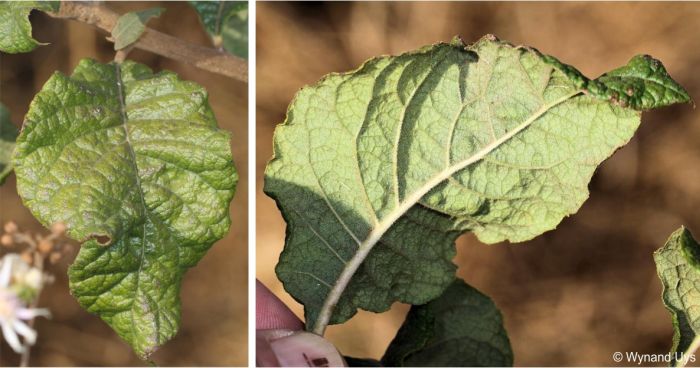
Flower heads appear at the tips of branches in flat-topped clusters and contain 10 to 25 small, sweetly scented flowers. The flower head is cup-shaped or rounded, 5–15 mm in diameter when pressed. Involucral bracts are arranged in five overlapping rows and are mostly hairless with gland dots and fringed edges. The outer bracts are small and pointed. The middle ones are obovate and may have small tails; the inner ones are longer and also pointed.
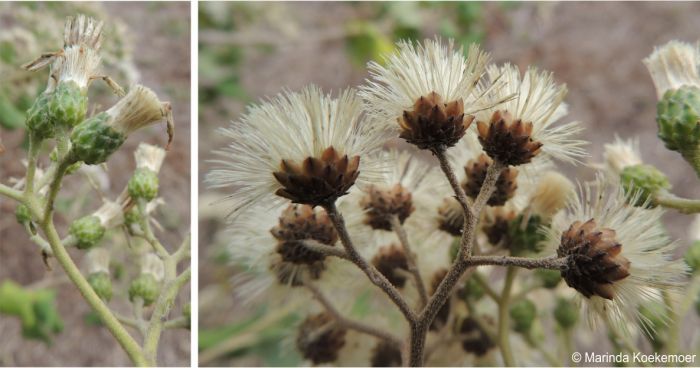
Florets range from white to creamy white or pale pinkish-mauve. The corolla is funnel-shaped, 8–10 mm long with slender lobes about 3–5 mm long. Anthers are arrowhead-shaped with small triangular tips. The style is up to 5 mm long with soft hairs near the tips and on its two branches (2.5–3 mm long). Fruits are narrow and slightly cylindrical, about 2–4 mm long with about 10 ribs. They are hairless but have small glands between the ribs. The pappus (used for seed dispersal) has two rows, with the outer row made up of narrow scales. Plants flower in autumn, winter and spring, from March to October.

Gymnanthemum coloratum looks similar to G. amygdalinum in shape and leaf texture, but G. amygdalinum has narrower, lance-shaped leaves, smaller flower heads with only five florets, rounded bracts, and slightly hairy seeds.
Conservation Status
Status
Gymnanthemum coloratum is widespread and not in danger of extinction, and is thus currently assessed as Least Concern (LC) in the Red List of South African plants.
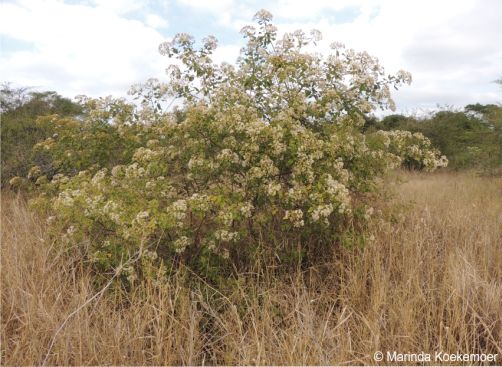
Distribution and habitat
Distribution description
This species is widespread in tropical Africa and northern southern Africa, found in Namibia, Botswana, Eswatini, and South Africa, where it occurs in Limpopo, Mpumalanga and KwaZulu-Natal provinces. It grows in woodlands, riverine forests, and forest edges from sea level to 975 m.
Derivation of name and historical aspects
History
The genus name Gymnanthemum comes from the Greek words gymnos meaning ‘naked’ and anthos, meaning ‘flower’ referring to the absence of paleae (chaffy scales) on the flower receptacle in species of this genus. The species epithet coloratum is derived from the Latin word colorata meaning ‘colourful’ in reference to the plant’s whitish to pale mauve flowers.
Gymnanthemum can be distinguished from other African members of the Vernonieae tribe by its shrubby growth form and pinnately-veined leaves covered with both glandular hairs and non-glandular T-shaped hairs. It has a flower receptacle without chaffy scales and blunt-tipped involucral bracts. The florets are white to violet, and the pollen is spiny and usually lacks ridges. The T-shaped hairs are either attached near the middle with arms of similar length or attached near the base with a small spur. The fruits have 8 to 10 ribs usually with silky or hairy ribs and small gland dots in between. In G. coloratum, the fruits are hairless but have gland dots while in G. myrianthum they lack glands.
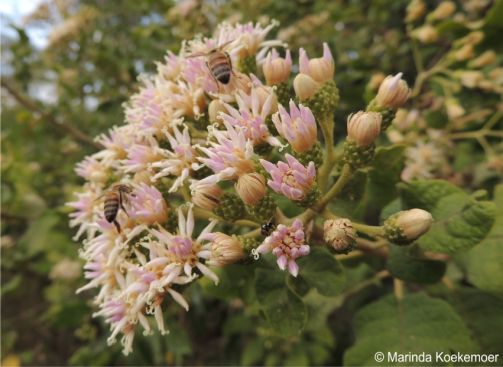
Ecology
Ecology
Gymnanthemum coloratum is likely pollinated by a variety of insects including bees, butterflies and flies, attracted by its sweet scent and pale, funnel-shaped flowers. Seed dispersal occurs primarily through wind, aided by a specialized two-rowed pappus that allows the cypselas to travel away from the plant. This combination of insect pollination and wind dispersal helps the species thrive across its natural range.

Uses
Use
The bark, leaves, roots and entire G. coloratum plant are widely used in traditional medicine to treat parasites, reproductive issues, schistosomiasis, liver diseases, STIs, diabetes, wounds, respiratory problems, malaria, skin diseases, fever and digestive disorders.
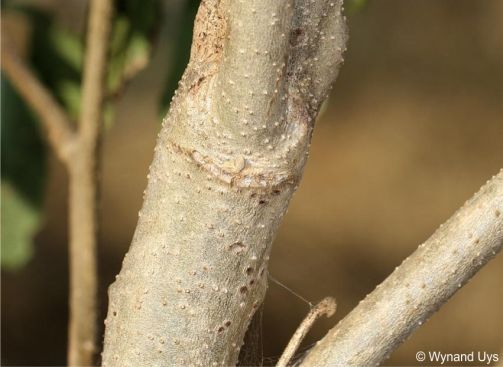
Growing Gymnanthemum coloratum
Grow
Gymnanthemum coloratum grows well in well-drained loam soil, in sun or some shade and needs regular watering while young. It can be propagated from seed sown in spring or from cuttings. It doesn’t get many pests and attracts bees and butterflies making it both beautiful and beneficial in the garden.
References
- Boon, R. 2010. Pooley's trees of eastern South Africa, a complete guide. Flora & Fauna Publications Trust, Durban.
- Swelankomo, N., Manning, J.C. & Magee, A.R. 2016. The genus Gymnanthemum Cass. (Asteraceae:Vernonieae) in southern Africa. South African Journal of Botany 102: 81–101.
- Uys, W. 2014. Observation of Gymnanthemum coloratum, Blyde River, Limpopo. iNaturalist. Online. https://www.inaturalist.org/observations/10996470.
- Von Staden, L. 2018. Gymnanthemum coloratum (Willd.) H.Rob. & B.Kahn. National Assessment: Red List of South African Plants. Online. https://redlist.sanbi.org/species.php?species=15263-9.
Credits
Thuli Dlamini
National Herbarium, Pretoria
April 2025
Acknowledgements: Images by Marinda Koekomoer and Wynand Uys.
Plant Attributes:
Plant Type: Shrub, Tree
SA Distribution: KwaZulu-Natal, Limpopo, Mpumalanga
Soil type: Sandy, Loam
Flowering season: Spring, Autumn, Winter
PH: Acid, Neutral
Flower colour: White, Pink, Mauve/Lilac
Aspect: Full Sun
Gardening skill: Easy
Special Features:
Horticultural zones
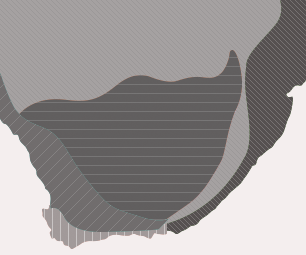







Rate this article
Article well written and informative
Rate this plant
Is this an interesting plant?
Login to add your Comment
Back to topNot registered yet? Click here to register.